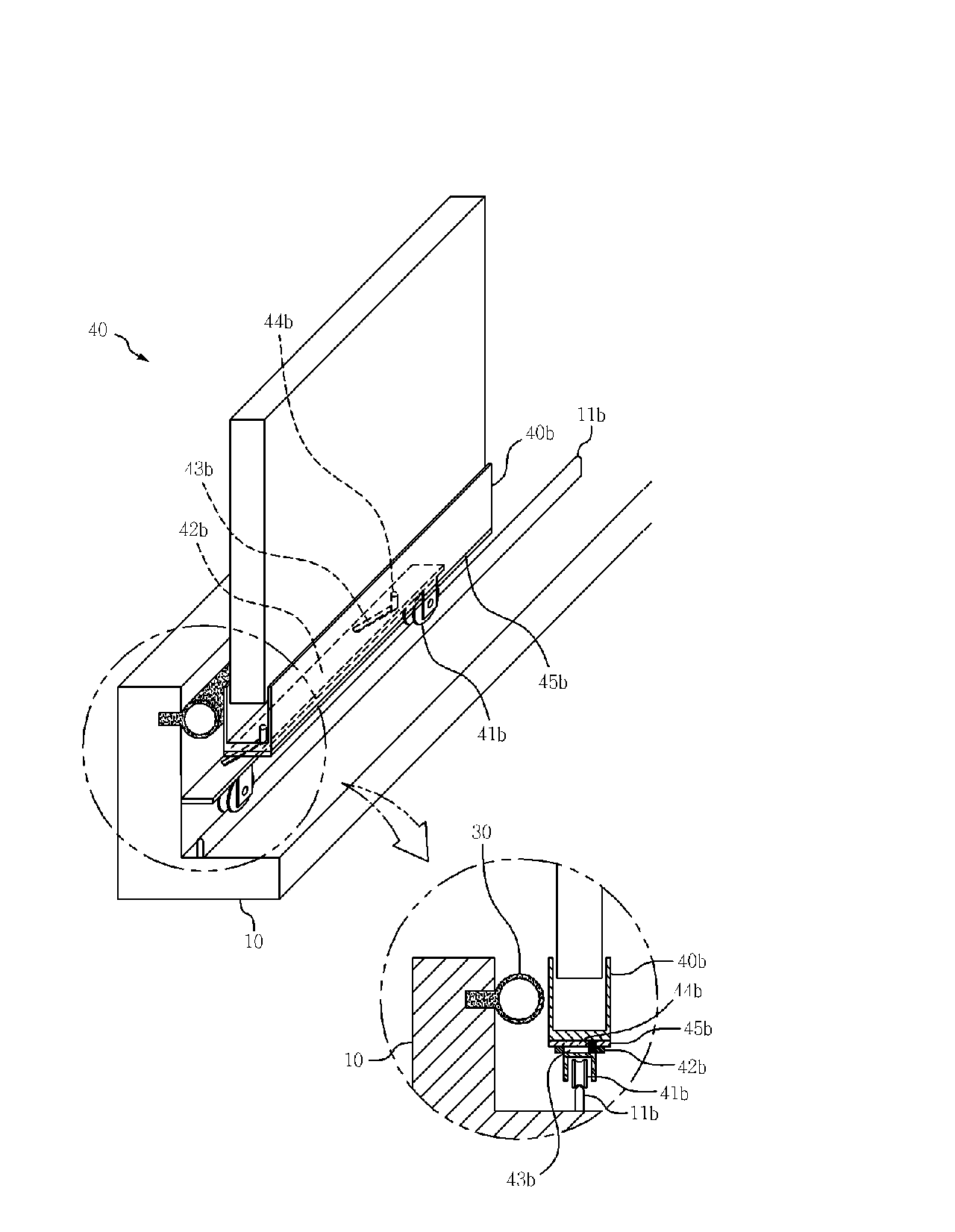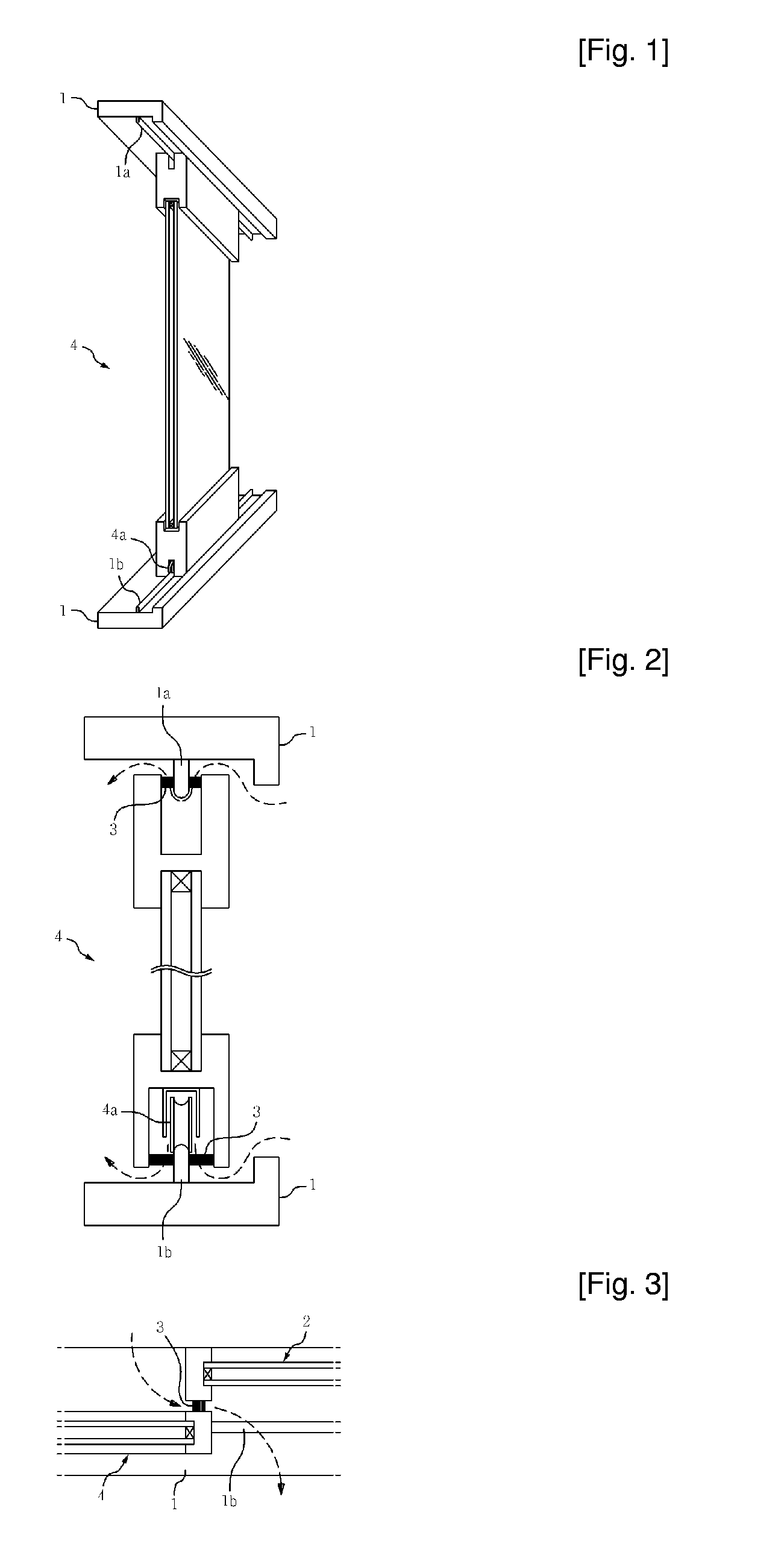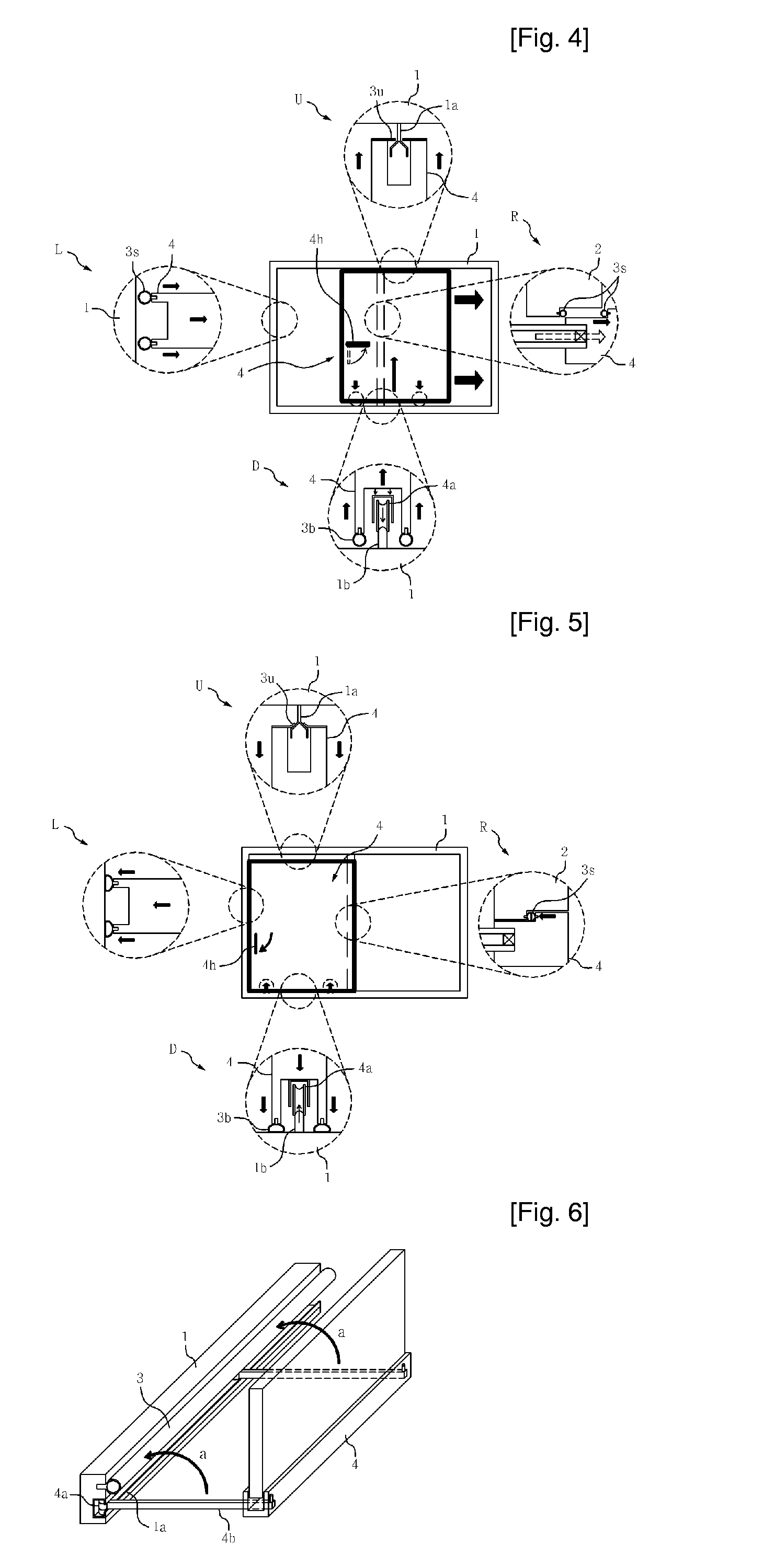Method and apparatus for window closing in the sliding window system
a technology for sliding windows and doors, applied in the field of window and door systems, can solve the problems of soundproofing, air tightness, tightness, insulation performance, wind pressure resistance, and the inability of the seal member to provide a high sealing effect, and achieve the effects of improving durability, improving soundproofing, and preventing damage to the seal member
- Summary
- Abstract
- Description
- Claims
- Application Information
AI Technical Summary
Benefits of technology
Problems solved by technology
Method used
Image
Examples
first embodiment
[0074]FIG. 14 illustrates the overall configuration of a sliding window system having an opening / closing device according to a preferred embodiment of the present invention (hereinafter referred to as the “first embodiment”). FIGS. 15 and 16 are simplified perspective views illustrating the states of the opening / closing device 50 shown in FIG. 14 before and after rotation.
[0075]Referring to FIGS. 15 and 16, the opening / closing device 50 includes a rotating axis member 50c that has a rotary handle 50h and that is mounted along a longitudinal direction of the side frame 40s, connecting rods 52b and 52a that are respectively linked to the top plate 42b of the roller assembly 41b and 42b and the bottom plate 42a of the rail guide assembly 41a and 42a and transform rotational motion into reciprocating motion, and first and second rotating end members 51a and 51b, each of which having one end fixed to either top or bottom of the rotary axis member 50c and the other end linked to either of...
second embodiment
[0093]A sliding window system including an opening / closing device with a different structure than the opening / closing device 50 described with reference to FIGS. 14 to 26 according to another embodiment of the present invention (hereinafter referred to as the “second embodiment”) will now be described with reference to FIGS. 27 to 40. FIG. 27 illustrates the overall configuration of a sliding window system having a slidable opening / closing system 150. FIGS. 28 and 29 are perspective view illustrating the configuration and operation of the sliding opening / closing device 150 and an exploded enlarged perspective view of a main portion of the slidable opening / closing device 150.
[0094]More specifically, referring to FIGS. 27 to 40, the slidable opening / closing device 150 according to the second embodiment includes a side slide bar 150c mounted along a side frame of the movable window sash 40 to allow up and down movement, a rotary handle 150h applying a force causing the side slide bar 1...
PUM
| Property | Measurement | Unit |
|---|---|---|
| time | aaaaa | aaaaa |
| time | aaaaa | aaaaa |
| length | aaaaa | aaaaa |
Abstract
Description
Claims
Application Information
 Login to View More
Login to View More - R&D
- Intellectual Property
- Life Sciences
- Materials
- Tech Scout
- Unparalleled Data Quality
- Higher Quality Content
- 60% Fewer Hallucinations
Browse by: Latest US Patents, China's latest patents, Technical Efficacy Thesaurus, Application Domain, Technology Topic, Popular Technical Reports.
© 2025 PatSnap. All rights reserved.Legal|Privacy policy|Modern Slavery Act Transparency Statement|Sitemap|About US| Contact US: help@patsnap.com



